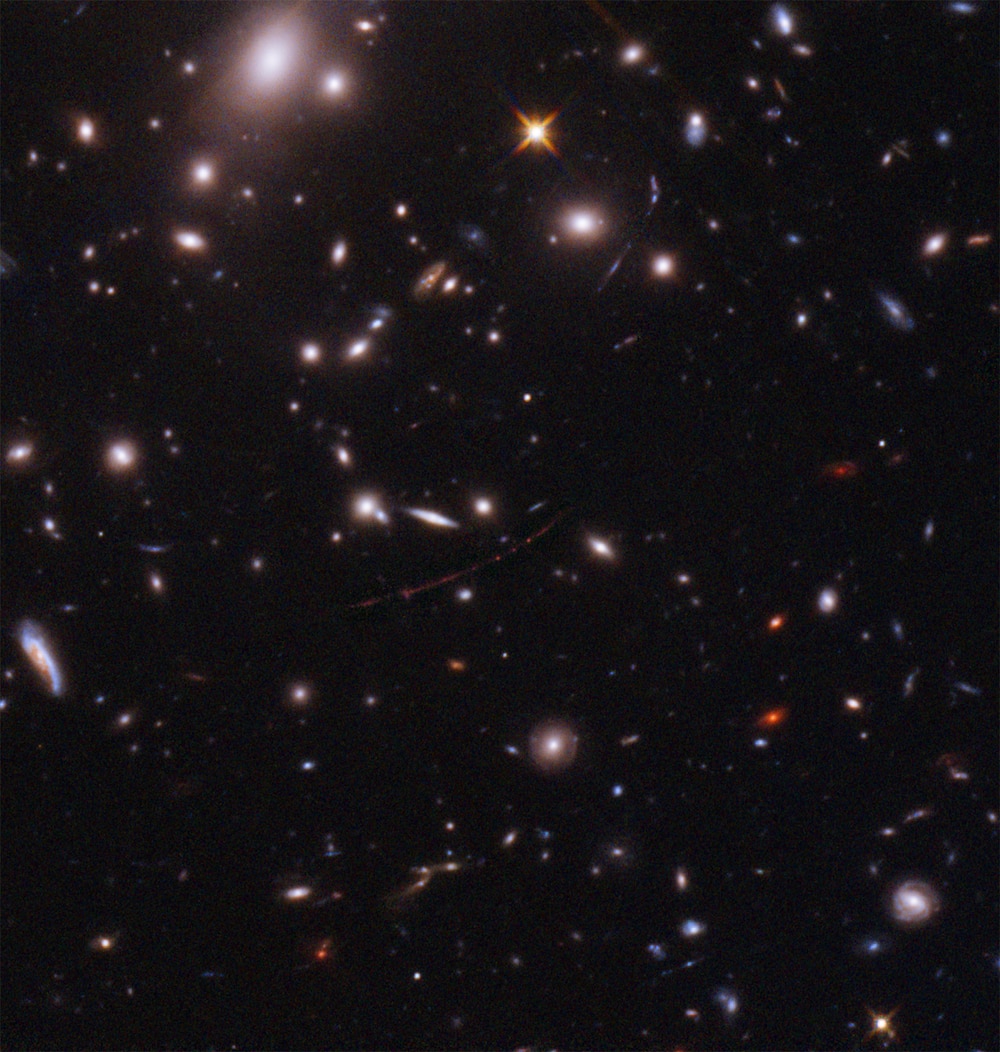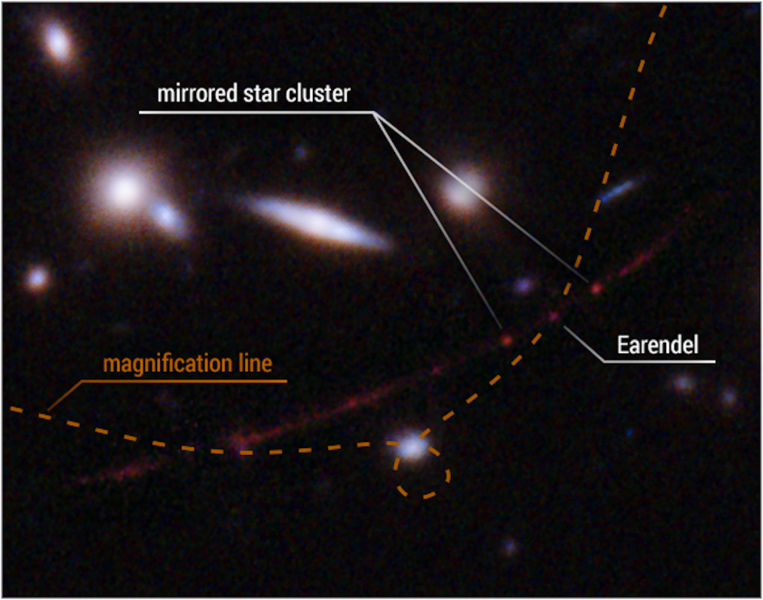Create a free profile to get unlimited access to exclusive videos, sweepstakes, and more!
What can the oldest star ever seen tell us about how stars were born?
Earendel, the furthest known star from Earth, could reveal secrets of star formation.

“I give you the light of Eärendil, our most beloved star.”
Anyone into the one fandom to rule them all remembers that scene in The Fellowship of the Ring where Galadriel hands Frodo a bottle glowing with unearthly light. It is the light of Eärendil, the star named after a half-elven mariner who carried it across the sky.
Eärendil (sometimes spelled Eärendel) only lives in J.R.R. Tolkien’s mythos, but an actual star has been named Eärendel, which is Old English — one of the languages that inspired the late author — for “morning star.” This is no ordinary star. You would have to go much further than Lothlórien to find it, since it is now the furthest known star from Earth or Middle-Earth that has ever been seen, and is even older than the relics of the First Age. It is almost as old as the universe itself, and might even be an elusive type of star that emerged in the primordial dark.
When NASA’s Hubble Space Telescope saw the light of Eärendel, astronomer Brian Welch, of Johns Hopkins University, and his team almost couldn’t believe it. Entire galaxies that far away are hardly visible, let alone a solitary star. Its light was so ancient that it started to shine when the universe was only 4 billion years old. Meaning, it took about 12.9 billion years to reach Earth, and catching sight of it in the sky is like going that far back in time, which could reveal secrets that have long been in the shadows. Welch led a study recently published in Nature.
“In the early universe, there have been fewer generations of stars that have lived and died and enriched the surrounding space with elements heavier than helium,” he told SYFY WIRE. “These early generations of stars are more dominated by hydrogen than stars today.”
Stars that flickered to life that early had not yet had the chance to pick up these elements, which are known as metals in astronomy. They are produced by the nuclear fusion that goes on in stellar cores. As hydrogen is burned, the nuclei of lighter elements are fused to create heavier elements, which are scattered through space when a star finally explodes in its supernova death throes. Not as many stars existed in the early universe, and more would need to die before floating particles of these elements ended up being swirled into the dusty nebulas where new stars were forming. This raises the question of what type of star Eärendel really is.
Whether Eärendel even belongs in either of the known populations of stars is unsure. Population I stars are rich in metals, while the quantity of metals in Population II stars is much less but nowhere near as low as the metal content of leftover gas from the Big Bang. Then there are the hypothesized Population III stars that have not yet been identified, but believed to exist. These are the stars that first appeared in the void. They are thought to be made of mostly hydrogen, helium, and trace amounts of lithium and beryllium, but are they even real?
“Proving we are seeing a Pop III star is tough because we have to prove a negative — that there are no metals present,” said Welch. “We will need a detailed spectrum of what elements are there, and if we see no metals, we can set upper limits on the total metal content of the star.”
By the way, if you’re wondering how this star was even visible, it wasn’t Elvish magic, but gravitational lensing from a ripple in spacetime. You can find out more about that here.
As the James Webb Telescope gazes further and further out into space, it might find magnified stars that are even more distant. More discoveries like this will be needed to get an idea of how the first stars formed. Even if Eärendel turns out to be a Population III star, it will be the only example unless others are found, so it will be difficult to generalize about how stars came into being and evolved in the embryonic universe until more relics from that era show up. Welch is optimistic.
“This discovery gives us a new window into the early universe,” he said. “Studying this star in detail gives us a unique insight into how this star formed, how it has evolved, and how we expect it to eventually die.”
Eärendel still has many mysteries to illuminate. May it be a light for you in dark places when all other lights go out.


























